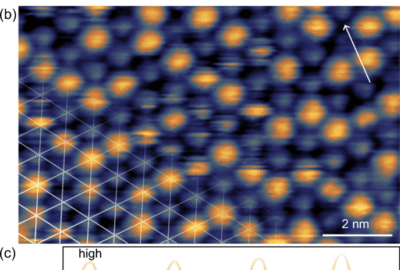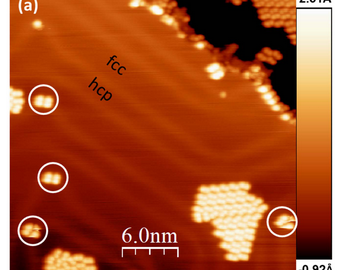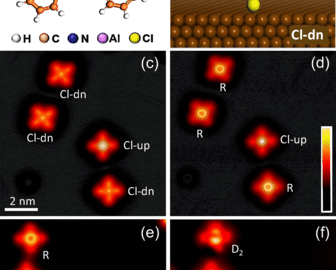publications
When Identification of the Reduction Sites in Mixed Molybdenum/ Tungsten Keggin-Type Polyoxometalate Hybrids Turns Out Tricky
The mixed molybdenum/tungsten Keggin-type polyoxometalate (POM) hybrid (TBA)4[PW9Mo2O39{Sn(C6H4I)}] (TBA = tert-butylammonium) has been prepared by the reaction between [α-PW9Mo2O39]7– and [Cl3Sn(C6H4I)] in dried acetonitrile, in the presence of tetra-n-butylammonium bromide. A further coupling reaction affords the ferrocenyl derivative (TBA)4[PW9Mo2O39{Sn(C6H4)C≡C(C6H4)Fc}]. The POM hybrids have been thoroughly characterized by NMR and IR spectroscopies. Electrochemical analysis confirms their ease of reduction compared to the all-W analogue, albeit with a second reduction process occurring at a lower potential than in the all-Mo species. It is noteworthy that the second reduction is accompanied by an unusual red shift of the electronic absorption spectrum. Whereas there is no doubt that the first reduction deals with Mo, the location of the second electron in the bireduced species, on the second Mo or on W, has thus been the subject of a cross-investigation by spectroelectrochemistry, electron spin resonance, and theoretical calculations. Finally, it came out that the second reduction is also Mo-centered with two unpaired and antiferromagnetically coupled extra electrons.
Maxime Laurans, Michele Mattera, Raphaël Salles, Ludivine K’Bidi, Pierre Gouzerh, Séverine Renaudineau, Florence Volatron, Geoffroy Guillemot, Sébastien Blanchard, Guillaume Izzet, Albert Solé-Daura, Josep M. Poblet, and Anna Proust
Comments are closed







